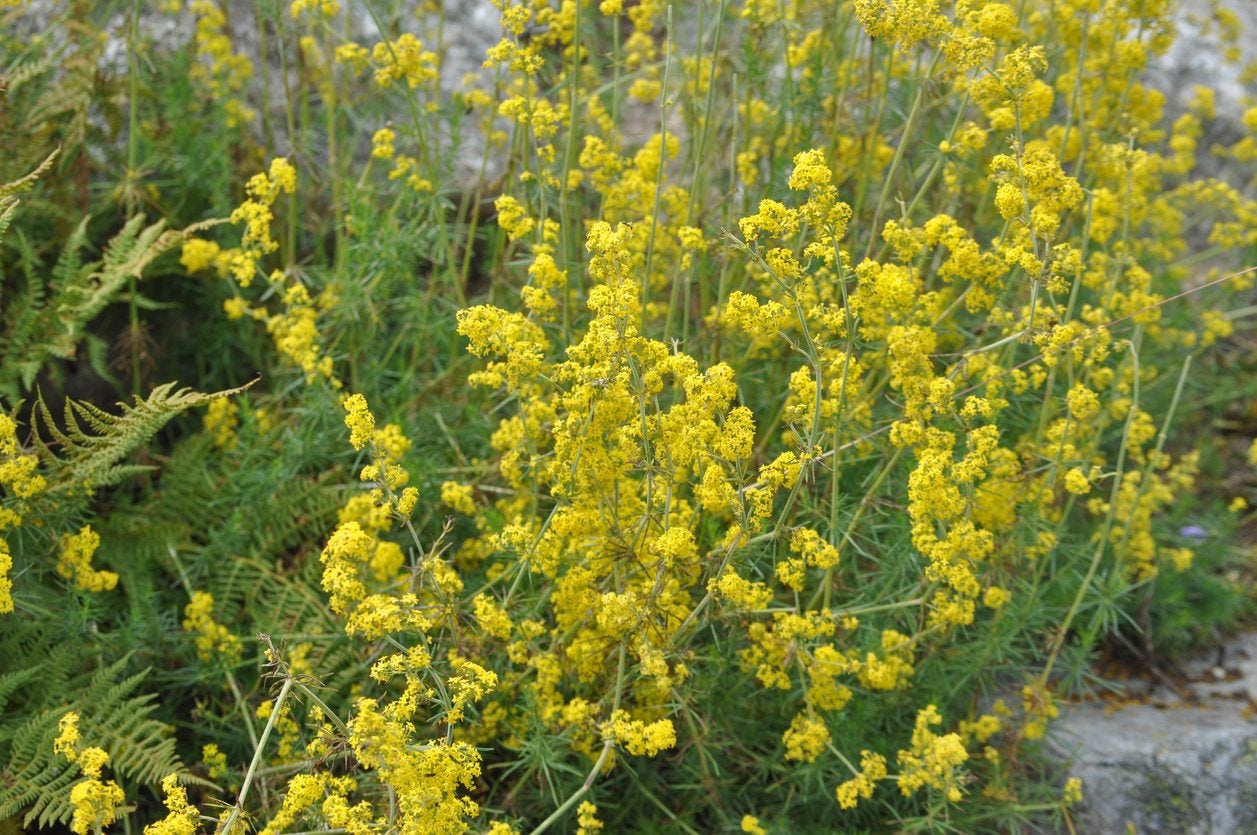Lady’s Bedstraw Plant Info – How To Grow Lady’s Bedstraw Herbs


Rumored to be what Mary laid upon as she gave birth to Jesus, lady's bedstraw is also called our lady's bedstraw. While there is no proof that lady's bedstraw was in the manger with Mary, Joseph, and Jesus that night, it is native to Europe, the Middle East, and Asia. Due to its importance as an herb, lady's bedstraw was brought to North America by early immigrants and has naturalized throughout the United States. In this article, I will cover the herbal uses of lady's bedstraw, as well as how to grow lady's bedstraw.
Lady’s Bedstraw Plant Info
Lady's bedstraw plant (Galium verum) is a perennial herb hardy in zones 3 through 8. Lady's bedstraw is one of over 400 varieties of Galium. Perhaps the most popular variety is Galium odoratum, commonly known as sweet woodruff, and the most annoying variety goes by goosegrass, sticky willy, or cleavers (Galium aparine). Lady's bedstraw has a creeping habit and whorls of 6 to 12 hairy, almost needle-like, long leaves. Unlike its cousin sticky willy, these hairy leaves do not catch and stick to you if you walk through them, but like sticky willy, lady's bedstraw has clusters of small yellow flowers that bloom from June – September. Like sweet woodruff, the flowers of lady's bedstraw are highly fragrant because they contain a chemical known as coumarin. The scent is described as being a cross between vanilla and freshly cut hay. Like dried flowers, the scent of lady's bedstraw flowers lasts a long time.
Uses of Lady’s Bedstraw
Long before man-made fibers, mattresses, and pillows were stuffed with organic materials, lady's bedstraw was often used as stuffing for beds. It is because of its association with the Virgin Mary, it was considered good luck to use lady's bedstraw in the mattresses of expecting mothers. Lady's bedstraw herbs were also used as dyes. The yellow flowers were used to make a yellow dye for butter, cheese, hair, and textiles; the red roots were also used to make a deep red dye. Lady's bedstraw is sometimes called cheese rennet because it contains a chemical that curdles milk and was used in cheese making. Besides mattress stuffing, dye, and cheese making, lady’s bedstraw plant was used as a traditional herb to treat burns, wounds, rashes, and other skin disorders. It was also used to treat epilepsy and the root is reportedly a flea repellent.
How to Grow Lady’s Bedstraw Herbs
Lady's bedstraw herbs will grow in full sun to part shade. They are not picky about soil type and can thrive in loam, sand, clay, or chalk. They do prefer soil that is alkaline to neutral, though. Once established, lady's bedstraw will be drought tolerant. However, the plant can spread like mad and become invasive. To keep it in check, try growing lady's bedstraw in pots or at least in areas where they will not choke out other plants in the garden.
Gardening tips, videos, info and more delivered right to your inbox!
Sign up for the Gardening Know How newsletter today and receive a free copy of our e-book "How to Grow Delicious Tomatoes".
-
 Get Ready For A Summer Of Hummers! Grow These Full Sun Hummingbird Plants and Flowers
Get Ready For A Summer Of Hummers! Grow These Full Sun Hummingbird Plants and FlowersIf you’re lucky enough to enjoy a sunny backyard, make sure you are maxing out on your pollinator opportunities and grow these full sun hummingbird plants and flowers
By Tonya Barnett
-
 12 Lush Alternatives To A Lawn For Sustainable Spaces
12 Lush Alternatives To A Lawn For Sustainable SpacesAlternatives to a lawn are beautiful and also beneficial to your local ecosystem and its pollinators. Explore our top picks for plants to replace grass.
By Tonya Barnett